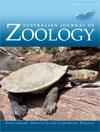There are several aspects of biology in which the contribution of males and females is unequal. In these instances the examination of Y chromosome markers may be used to elucidate male-specific attributes. Here, male dispersal patterns and genetic structuring were examined using four Y-microsatellite loci in 186 male western grey kangaroos, Macropus fuliginosus, from throughout the species’ trans-continental distribution. In addition, 52 male grey kangaroos were examined to investigate hybridisation between M. fuliginosus and the eastern grey kangaroo, Macropus giganteus, in their region of sympatry in eastern Australia. Detected Y chromosome diversity was low, resulting from low effective male population size due to skewed sex ratios and a polygynous mating system. As expected, male dispersal was high across the range. However, the Lake Torrens–Flinders Ranges region appears to have significantly restricted male movement between eastern and central/western Australia. There was little evidence to suggest that other barriers (Nullarbor Plain and Swan River Valley) previously identified by nuclear and mitochondrial DNA marker studies restrict male movement. Hence, the admixture events previously identified may be associated with high male dispersal. Within the region of sympatry between M. fuliginosus and M. giganteus in eastern Australia, four M. giganteus individuals were found to possess M. fuliginosus Y-haplotypes. These results confirm the occurrence of hybridisation between male M. fuliginosus and female M. giganteus. Additionally, the introgression of M. fuliginosus Y-haplotypes into M. giganteus populations indicates that at least some male hybrids are fertile, despite evidence to the contrary from captive studies. This study has provided insights into the male contribution to population history, structure and hybridisation in M. fuliginosus, which were not predicted by comparisons between biparentally and maternally inherited markers. This highlights the importance of direct examination of the Y chromosome to provide novel insights into male-mediated processes, especially where the contribution of the sexes may differ.
How to translate text using browser tools
8 March 2013
Paternally inherited genetic markers reveal new insights into genetic structuring within Macropus fuliginosus and hybridisation with sympatric Macropus giganteus
Linda E. Neaves,
Kyall R. Zenger,
Robert I. T. Prince,
Mark D. B. Eldridge
ACCESS THE FULL ARTICLE

Australian Journal of Zoology
Vol. 61 • No. 1
June 2013
Vol. 61 • No. 1
June 2013




